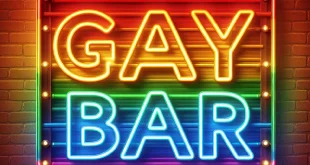Should the Education System Feel Responsible?
The discussion of homophobia and the actual risk of HIV to the population is always a heated debate, but it becomes a muddier and more frustrating topic when words like “men who have sex with men” (MSM) and “bisexual” are used—and these words are used frequently in studies conducted by the Center for Disease control on AIDs and HIV. The statistics on diagnoses of HIV in 2010 indicate that gay, bisexual, or MSM men whom comprise about 2% of the population account for about 63% of diagnoses in the United States. But the word “about” is the confusing part. It is not exactly clear how many of these men are straight men that have engaged in homosexual acts, and perhaps one might wonder if these men are admitting to homosexual behavior because they are seeking treatment for HIV. Are we certain these men were included in the estimated 2%? Most new diagnoses of HIV occur in young men between 13-24 years of age… they comprised a jaw-dropping 72% of the gay and bisexual men diagnosed with HIV in 2010. Of these individuals, an incredibly large percent of them are African American male youth from disadvantaged backgrounds. Their reported sexual orientation is not the reason that they have contracted the disease, but rather a lack of sexual education and resources for gay men and youths is to blame.
HIV is not a consequence of homosexual behavior, but a consequence of risky sexual behavior (and in some cases drug use). Is that what men who have sex with men are doing, inflating the CDC’s estimates of homosexuals and bisexuals with HIV? Perhaps, but not because MSM are given to more wanton sexual behavior. This term can describe a situation where a man is sexually attracted to another man for any number of reasons but still identifies as straight. He isn’t bisexual because he doesn’t judge himself to be bisexual, and from a positive psychological perspective of identity this is what matters. He may think he is only capable of committing to a woman in a romantic way, or he may not feel equally attracted to both sexes, but either way he is not homophobic and in denial of his identity. In all probability these men have diverse sexual habits because of the broad category of relationships it can describe.
Obviously some high-risk sexual behaviors, particularly those occurring between men under the influence of drugs or alcohol, are being thrown into this category of men who have sex with men. These encounters would probably not meet most standards for “romantic” behaviors between men, and it is horribly unfair that they are counted among the estimates for new diagnoses of HIV in gay and bisexual men. The rampant homophobic attitudes that prevent awareness campaigns and resources from being accessed in some communities would like us to think that all gay men are having random encounters. The bitter irony is that this fear-mongering promotes carelessness, especially in younger people who need to be educated on what exactly “high-risk sexual behavior” is.
It’s an unsavory topic, but teenagers are having sex. The academic world has come a long way in its attitude towards homosexuality recently by including LGBT alliance and awareness groups in schools, but we need to take a more aggressive attitude towards sexual education in schools. Sexual education needs to be taught in every classroom, and the earlier that teens get it the better off they are. The LGBT community is not taking up enough time in classroom discussions of sexuality. The education system cannot tiptoe around topics like “men who have sex with men” and “homosexuality”. There is no end to the number of mistakes a teenager can make without appropriate guidance from the education system. We were all there once… we have to be honest with ourselves. Blaming stupidity and thinking that the actions of wayward teens don’t affect us is our right, but the astoundingly high numbers of new HIV diagnoses portray the denial of these youths by our culture—they are parallel minds that we just won’t accept responsibility for. Rather than scapegoating the underprivileged communities that raise them, efforts to raise LGBT awareness need to expand beyond home. Community effort needs to mean national effort and then global effort. Bridging the gap between LGBT communities and underprivileged communities created by HIV is the key to fighting this epidemic. If there is anything you can do, don’t hesitate.
MSM, Gay, and Bisexual Men and HIV Risk: Should the Education System Feel Responsible?
Dr. M. Mirza – lgbt health wellness .com – 2014
 Lesbian, Gay, Bisexual, Transgender & Intersex News Lesbian News, Gay News, Bisexual News, Transgender News, Intersex News, LGBTI News
Lesbian, Gay, Bisexual, Transgender & Intersex News Lesbian News, Gay News, Bisexual News, Transgender News, Intersex News, LGBTI News




